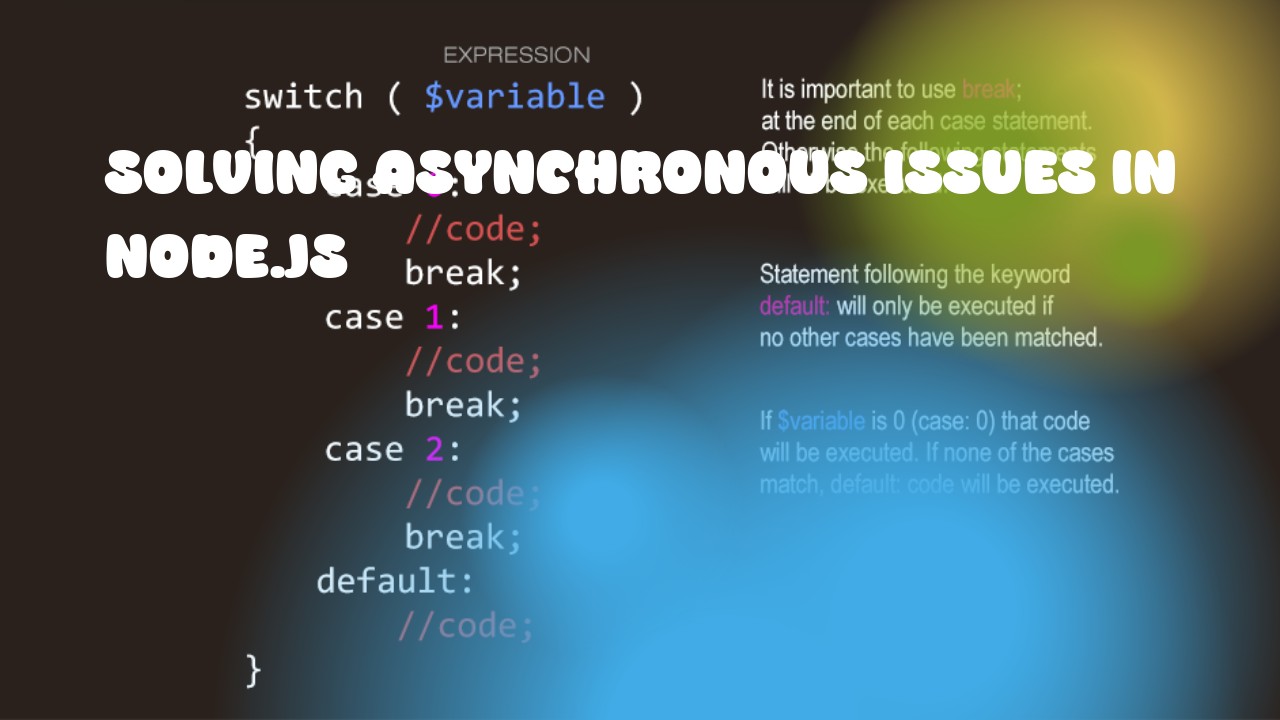In Node.js, asynchronous operations can be challenging due to the single-threaded nature of JavaScript. Here's an explanation of common problems that occur with asynchronous programming in Node.js and how they can be solved.
- Callback Functions: The most common problem is callback hell, which occurs when multiple nested callbacks make your code difficult to read and maintain. To solve this problem, Promises and Async/Await can be used.
Example using Promises:
function fetchData(url) {
return new Promise((resolve, reject) => {
http.get(url, (res) => {
let data = '';
res.on('data', (chunk) => {
data += chunk;
});
res.on('end', () => {
resolve(JSON.parse(data));
});
}).on('error', (err) => {
reject(err);
});
});
}
fetchData('https://example.com/api')
.then((response) => {
console.log(response);
})
.catch((err) => {
console.error(err);
});
Example using Async/Await:
async function fetchData() {
try {
const response = await fetch('https://example.com/api');
const data = await response.json();
console.log(data);
} catch (err) {
console.error(err);
}
}
fetchData();
-
Callbacks: Another common problem is using callbacks without passing them as arguments to other functions, which can lead to unpredictable behavior. To solve this problem, you should use callback patterns consistently and pass callbacks as arguments whenever necessary.
-
File I/O operations: File I/O operations are blocking, which means that they will stop the execution of subsequent code until the operation is complete. This can be solved by using non-blocking I/O operations or event-driven programming.
Example using Event Emitter:
const fs = require('fs');
fs.readFile('example.txt', 'utf8', (err, data) => {
if (err) throw err;
console.log(data);
});
- Network requests: Network requests can also be asynchronous, and using them without proper error handling can lead to unexpected behavior. To solve this problem, you should handle errors consistently and use appropriate callback patterns or Promises.
Example using Callbacks:
http.get('https://example.com', (res) => {
let data = '';
res.on('data', (chunk) => {
data += chunk;
});
res.on('end', () => {
console.log(JSON.parse(data));
});
}).on('error', (err) => {
console.error(err);
});
Example using Promises:
function fetchData() {
return new Promise((resolve, reject) => {
http.get('https://example.com', (res) => {
let data = '';
res.on('data', (chunk) => {
data += chunk;
});
res.on('end', () => {
resolve(JSON.parse(data));
});
}).on('error', (err) => {
reject(err);
});
});
}
fetchData()
.then((response) => {
console.log(response);
})
.catch((err) => {
console.error(err);
});

